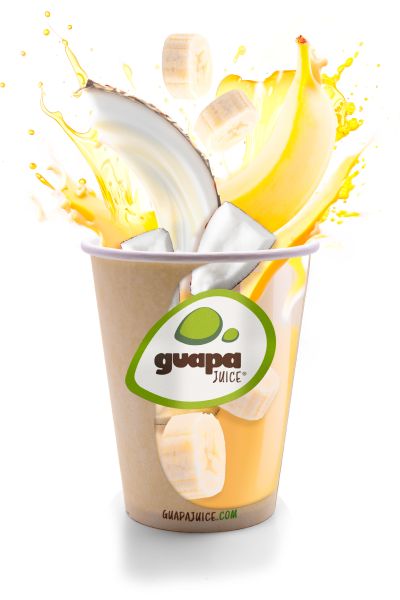Case Study
Guapa Juice
AI Workflows for Powerful Food Photography
Client
Guapa Juice
Date
Spring 2023
The Missions
-
Packshot Photography
-
Food Photography
-
AI Automation
-
AI Upscaling
-
Catalog Art Direction
The Goal
Deliver Dynamic yet Consistent Receipe designs for Kiosk Self-Service Screens
Guapa Juice is a belgian brand specializing in delivering minute made fresh mixed fruit juices, sweets and milk shakes in mall food courts and other strategic stores. From Brussels to Leuven, the brand capitalizes on a dynamic and succesful startup reputation which transcribes into its communication.
For a food photographer, creating pop effect via motion is highly technical and involves both a perfect knowledge of lighting techniques at high speed to freeze droplets and liquids movements in a splash and perfect timing to catch the point of contact of fresh food chunks with the dish or - in this case - the cup and it's content. Considering the number of receipes available in Guapa Juice Catalog the amount of shots to get a perfectly and consistent series of splashes while shooting all kinds of fruit and vegetables chunks into accurately textured and colored juices require a HUGE amount of trials and errors. Hence the cleaning of the studio and overall waste of food due to many attempts needed to catch the perfect composition for each receipe... And quite some luck.
Building the concept
Considering the amount of defects and uncertainty of the production process of a full catalog of "liquid explosions" based on a traditional workflow, we decided to bring in the experimental Artificial Intelligence Workflows based on available litterature on this topic by March 2023.
The client actually shortened up the moodboarding process and instead came with a specific - and already sketched - idea of the final expected rendering. This helped the research and development phase but allowing to cut right through to unknown and go for the workflow constraints.
From Midjourney to Firefly via Topaz AI
Three tools have been shortlisted to handle the process : first of all using Midjourney AI on Discord Version as it appeared to be the most consistent and reliablecreative iteration tool of it's time, but with the following limitations (obsolete by now) of delivering only low resolution assets (less than 2 megapixels) and not (yet) allowing local adjustments on each iteration.
To properly nurture the learning curve of the AI a pro license was required, allowing to reset and sharpen at will the learning curve of the AI model, based on actual primary sets of photos physically made in our studio in Brussels. Two sets of pictures were therefore combined : a first one destined to teach the model what type of assets we expect while describing objects such as "pineapple slice", "banana chunk" or "little carrot with leaves". Then we produced a second set of pictures picturing the juice cup with the actual receipes combinations around it.


The Half-Cut Cup
Finally a third bunch of pictures were made specifically to explain to the model how the container (paper cup) would be cutted to reveal the inner mix and showcase the client logo in a clean and consistent framing.
Iterating & rewarding the model when the liquid action is consistent with the guidelines
Then the iterations began (600 on average) to create a consistent art direction into the model for each receipe. The validated outputs were then upscaled to 12 megapixels using Topaz Gigapixel AI allowing a high quality postprocessing using Adobe Neural Engine and Adobe Photoshop Ai Assistants for local corrections (now called Firefly).
At Delivery, all assets are downscaled to 2Mpx again and compressed to optimize loading time and smooth experience using the touchscreen devices.
The Result
From brief to Production Delivery the actual full process took places in matter of weeks instead of months - and avoided a significant amount of studio cleaning and potato-tube launcher reloading, even if it sounds funny it can become a real assistant killer when reproduced hundreds, if not thousands of times. Along the full process this included more "traditional" operations for packshot photography workflows such as processing branded shiny metal camping bottles, extra cup sizes, side dishes and other color variations based on a simple but important pre-production step consisting of measuring the color and density of each mix and creating a trustworthy reference palette.

In fine, even if the full process seemed to took the same amount of energy as if it had been produced in a more conventional way, it's effectiveness and the ability to generate new assets almost immediately worth the price of the effort. For the future, this kind of workflows may be even more improved by using cycle of iterations assisted at other steps such as the prompting (involving GPT-4) and the opportunity to animate the results (such as custom workflows available in Runway AI).





















































